Wide-ranging program delves into antibiotics, food security, shrimp trade, investment, animal welfare and social responsibility
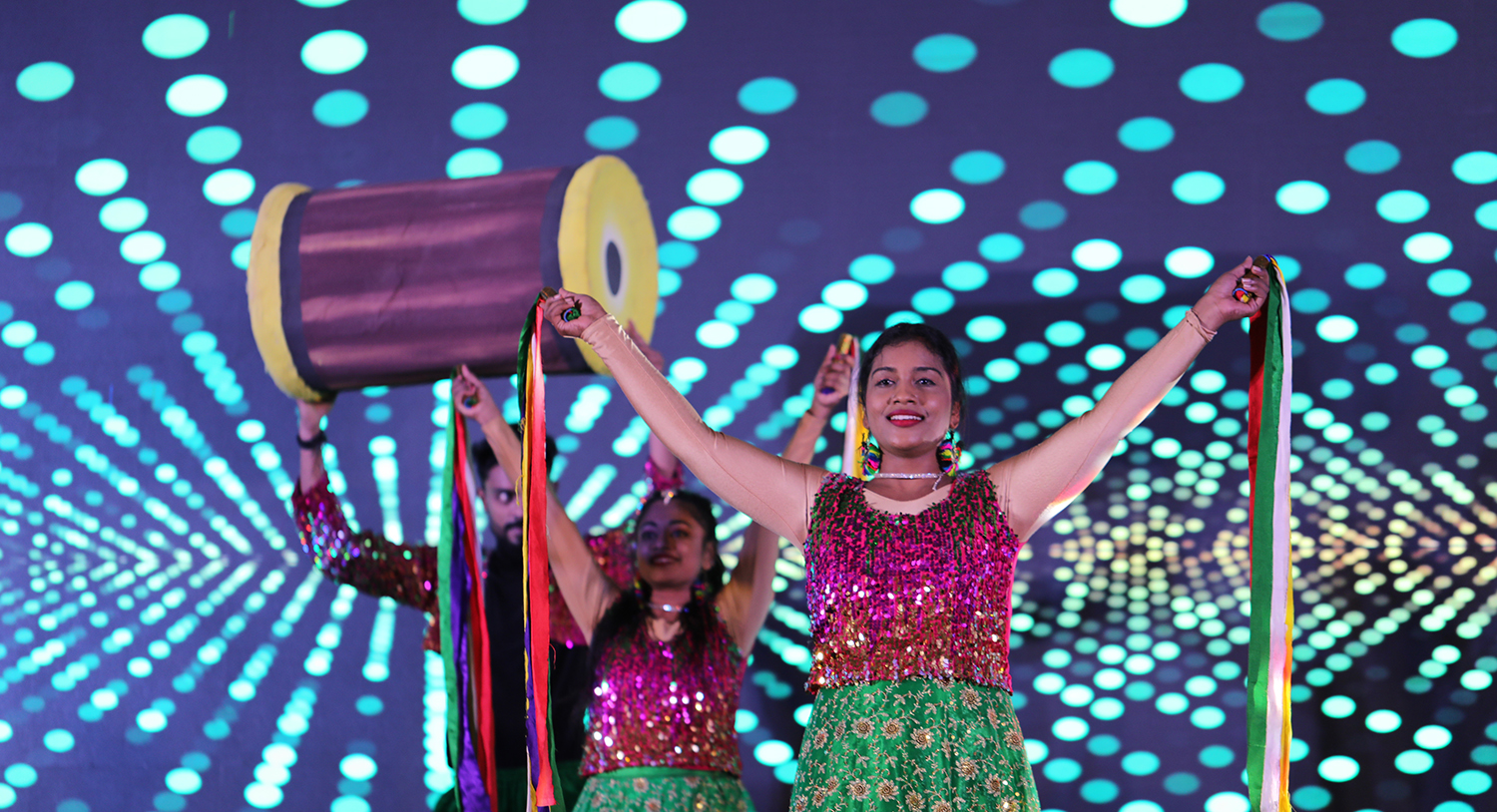
The Global Aquaculture Alliance held its 20th GOAL (Global Outlook for Aquaculture Leadership) conference last week in Chennai, India, and brought a host of experts in various fields to share their expertise.
Andrew Mallison, the nonprofit organization’s CEO, said during the opening address that GAA is hoping help move aquaculture “from left to right” along a path of continuous improvement by helping producers adopt best practices, achieve certification and strive for beyond-certification innovations that push the industry forward.
“You have to commit,” he said, echoing the conference’s theme, “Connect. Collaborate. Commit.” He then asked attendees to publicly announce goals and report on their progress at next year’s event. “Nothing will change unless we collectively apply ourselves to do it. It can be small – it doesn’t have to be millions of dollars. Just commit to something.”
The conference, held at Chennai’s posh Leela Palace hotel, offered an overwhelming amount of content over the course of three days. Here are 10 bits of knowledge that attendees were able to take home with them.
1. India’s aquaculture industry is booming. And it’s not done.
K.S. Srinivas, chairman of India’s Marine Products Export Development Authority (MPEDA), said India’s goal is to grow annual aquaculture export revenue from an already impressive $7 billion to $15 billion. To do yet again double its seafood exports, which it has done in just over the past decade, it will need to diversify its shrimp production beyond Pacific whites (Litopenaeus vannamei).
“We think it will only be two or three years before we are really exporting black tiger (Penaeus monodon) again,” he said. “Aquaculture area has grown 800 percent over the last decade, but the total area utilized is just 15 percent.”
India’s seafood processors are underutilized, Srinivas added, and there is “enormous scope” for new finfish species, including tilapia in freshwater and cobia and sea bass along the country’s vast coastline.
Srinivas said India needs investment in its farms, hatcheries and cold storage, and is hoping that more producers attain third-party certification.
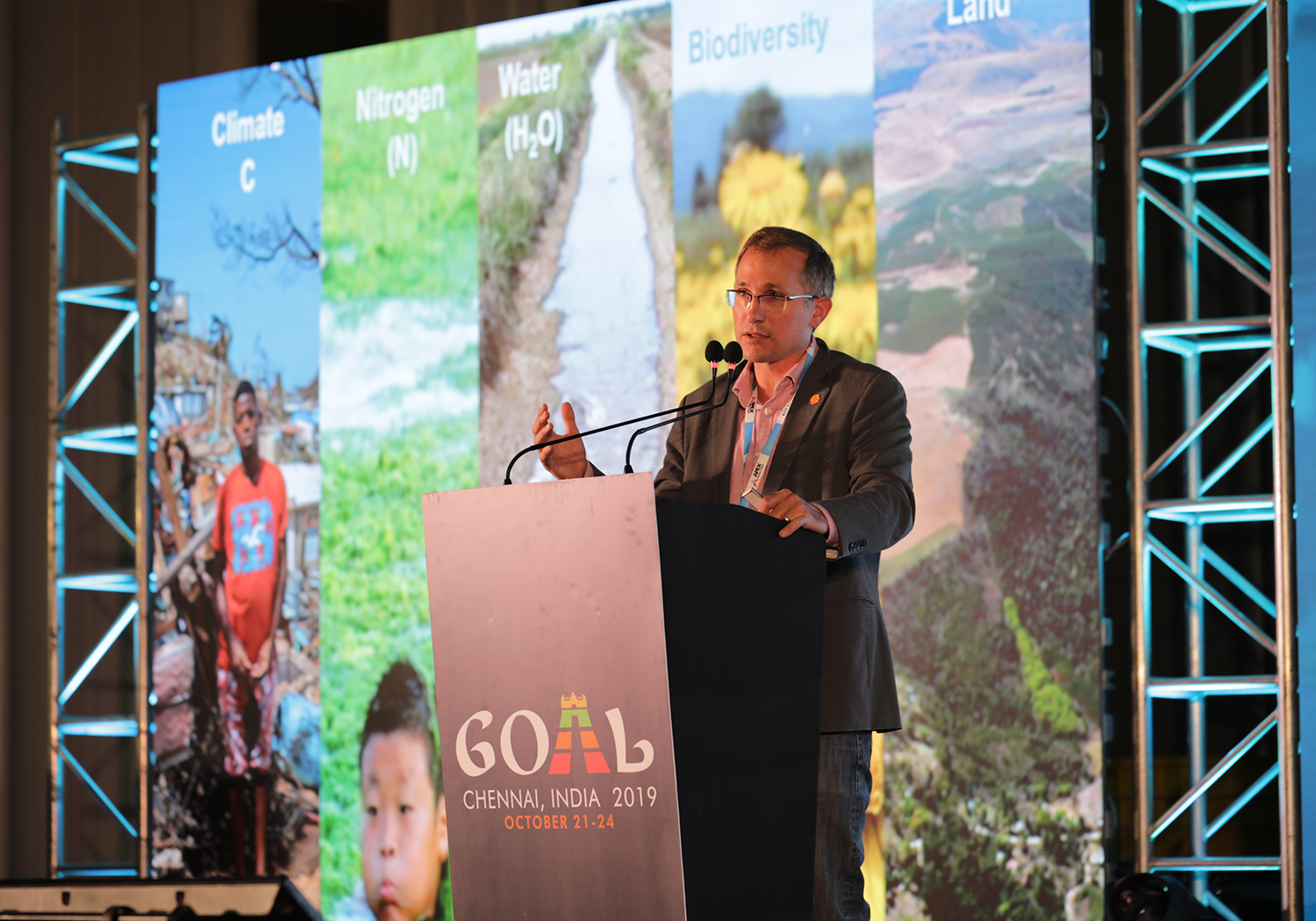
2. Aquaculture is at a ‘critical juncture’ in regard to global food security.
Fabrice DeClerck – co-author of the influential EAT-Lancet Commission report “Food. Planet. Health.” – said that producing food in the Anthropocene era poses massive planetary challenges that aquaculture is uniquely poised to meet.
“We’re now talking about environmental change you can measure on a planetary scale,” said DeClerck, adding that terrestrial agriculture is responsible for 80 percent of total planetary greenhouse gas emissions.
“Food is fundamentally failing environments,” he said, saying that 2 billion people around the world lack key micronutrients like iron and Vitamin A, and that 155 million children are stunted, 52 million children are wasted and 2 billion adults are obese or overweight (41 million of them children) mainly due to inefficiencies with food production.
“Food is our most intimate relationship with nature and our own health, and it is fundamentally failing. Feeding 10 billion people a healthy diet within safe planetary boundaries is possible and will improve the health and wellbeing of millions of people and allow us to pass onto our children a viable planet,” he said. “You and your sector are at a critical juncture. You have an important solution here.”

3. Vannamei retains its status as top shrimp species.
Jim Anderson, director of the Institute for Sustainable Food Systems and a professor of food and resource economics at the University of Florida, delivered the annual shrimp production survey, for which 84 respondents around the world shared data. Anderson said he trusts the GOAL survey data, but the industry needs more and better information and called out for even greater collaboration in the future.
“Fair and free trade is essential for the creation of wealth and responsible use of resources. We need information. This industry lacks timely, high-quality information,” he said.
The GOAL data, which Anderson said is typically more conservative (and more timely) than figures provided the Food and Agriculture Organization (FAO) of the United Nations, shows that shrimp production is expected to grow at a 4.5 percent CAGR from 2015 to 2021. In 2021, total shrimp production will be 11 percent higher than in 2018.
The No. 1 shrimp species remains Pacific whites, which account for 79 percent of global production. Diseases, trade wars and unclear production data from China make future market conditions difficult to predict, he added.
Gorjan Nikolik, senior analyst at Rabobank International, said that shrimp is rare in that it is elastic in both supply and demand – supplies and suppliers can switch quickly, leading to major shifts on the trade map.
“It’s a very competitive sector – and to the banking sector, a warning to us,” he said, noting that India took the position of top shrimp supplier to the U.S. market from Thailand amid the industry’s struggles with EMS (early mortality syndrome), a shrimp disease that peaked in 2013.
Ecuador has also benefitted from a shift in global shrimp production, Nikolik said, noting a 38 percent increase (forecast) in production for 2019, which he said was “unbelievable that the second-biggest supplier can do that in a low-price market.”
Ragnar Tveteras, a business economist at Norway’s University of Stavanger, said that the surge of interest in land-based production of Atlantic salmon will create a subsector producing 800,000 metric tons, should all current projects complete construction and begin producing. Recirculating aquaculture systems (RAS) for salmon represent “several billion U.S. dollars in investment,” said Tveteras, but he’s not certain how it will pay out.
“Will these investments grow aquaculture in a sustainable manner, or will we see losses on a scale that we have never seen before?” he asked. “I don’t know but aquaculture is more exciting than ever before.”
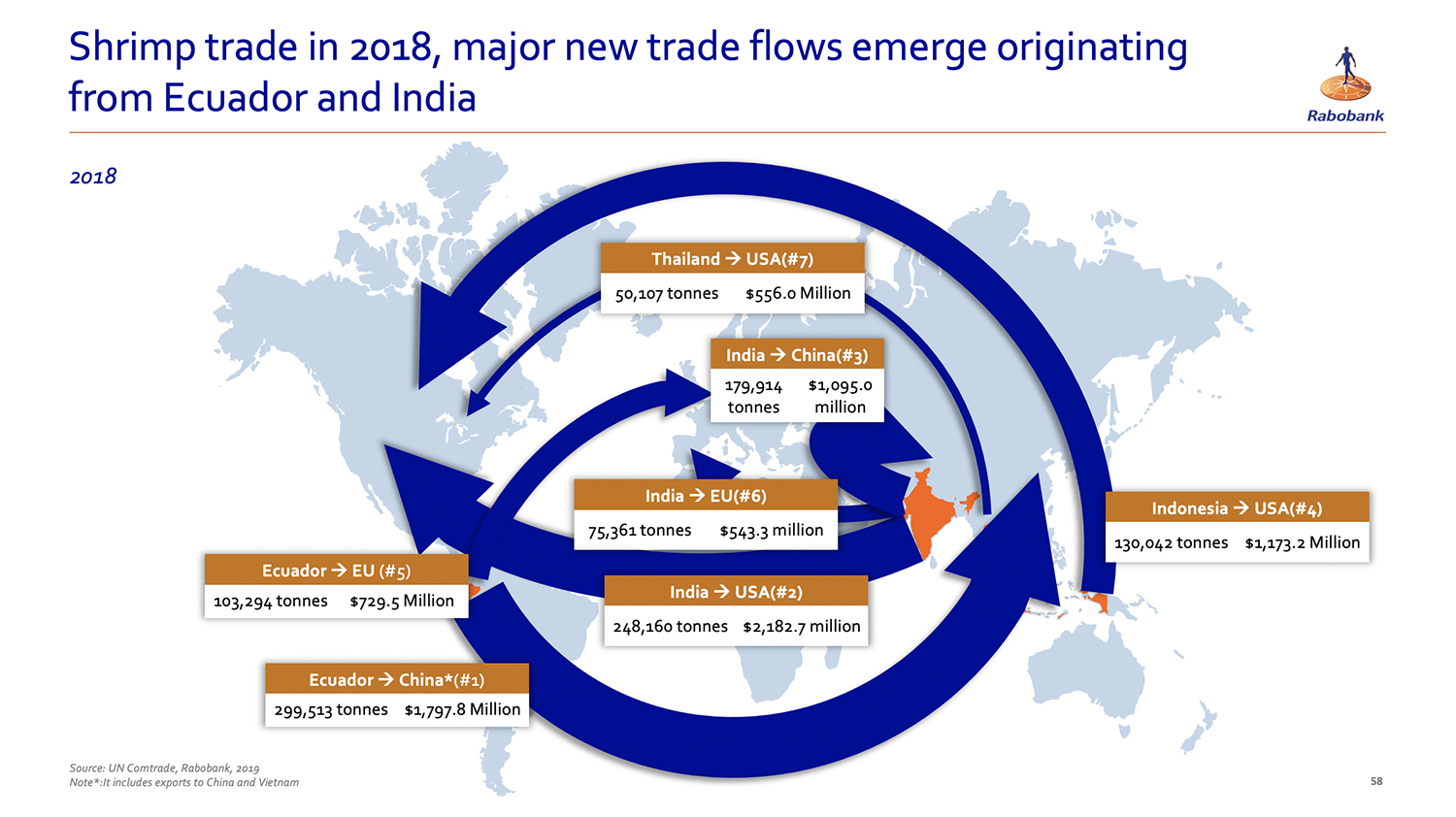
This global shrimp trade diagram shows the emergence of both India and Ecuador as global farmed shrimp powerhouses. Source: Rabobank International, Gorjan Nikolik.
4. Shrimp diseases remain significant obstacle in Asia.
Loc Tran, founder and director of the ShrimpVet Laboratory in Vietnam, reported that EMS is still a significant problem in Asia, but that producers are armed with new practices to mitigate the damage. At first sign, farmers know to reduce feeding by 50 percent for three to five days, and modern pond design – such as the increasingly common “shrimp toilet” to help flush out bottom waste – are making farms less susceptible to outbreaks.
However, newer diseases like shrimp hemocyte iridescent virus (SHIV), white feces syndrome and EHP (Enterocytozoon hepatopenaei) are keeping producers on their toes. Mortalities from SHIV, said Tran, are usually associated with bad water quality and environmental conditions.
“Functional diets, prophylaxis and fermented feed have good potentials in disease management,” said Loc Tran, who noted that more and more samples of shrimp from ponds throughout Southeast Asia that have been sent to his lab are showing positive results for EMS or EHP. Clean postlarvae, clean ponds, waste management via recirculating systems and probiotics are all key to managing EMS and white feces syndrome, he added.
“Shrimp farming will be more science-based, controlled, sustainable and predictable. Shrimp prices may be up and down all the time. We cannot fix that from a farmers’ perspective, but we can fix our farms.”
Robins McIntosh, senior VP at Thailand-based Charoen Pokphand Foods Public Co., said control is crucial in shrimp production and disease management.
“Sustainable intensification is really a misnomer. We’re talking about control. As conditions change it’s really about more control, which ends up being more intensification,” he said.
McIntosh said that any dense monoculture “always brings the pests” and that shrimp farms, which are often clustered together in “neighborhoods,” can thusly suffer en masse. “You have more vibrios, more algal blooms, more dry spells, more disease – it’s more difficult. Twenty years ago we had the same things but no disease. There’s something fundamental going on.”
Post-EMS, it’s the “no-name losses in production systems” that are causing the most problems, said McIntosh, who detailed how CP Foods is embarking upon “generation five” in shrimp farming, marked by total recirculation, total waste capture and recycling, increased automation, more environmental controls and annual production levels reaching 30 to 60 tons per hectare. These so-called generation five farms will need to reduce shrimp waste to recyclable materials and that better biosecurity will help farms produce more with less. “The farmer can’t control the market, but he can control his product, and that’s key,” he said.
Sreeram Ravi, of Indian aquaculture technology startum Eruvaka Technologies, said close monitoring of feeding activities can give producers an early indicator of disease.
“Before we see white feces, we see a drop in feed in take followed by a month of flat period. If there is a downtrend every day and it is not recovering, we advise farmers to harvest,” he said. Eruvaka offers a tool called “ShrimpSnap,” an automated feed tray that regularly creates computer-vision images of shrimp feeding activity for farmers to analyze to glean average size and distribution ratios.
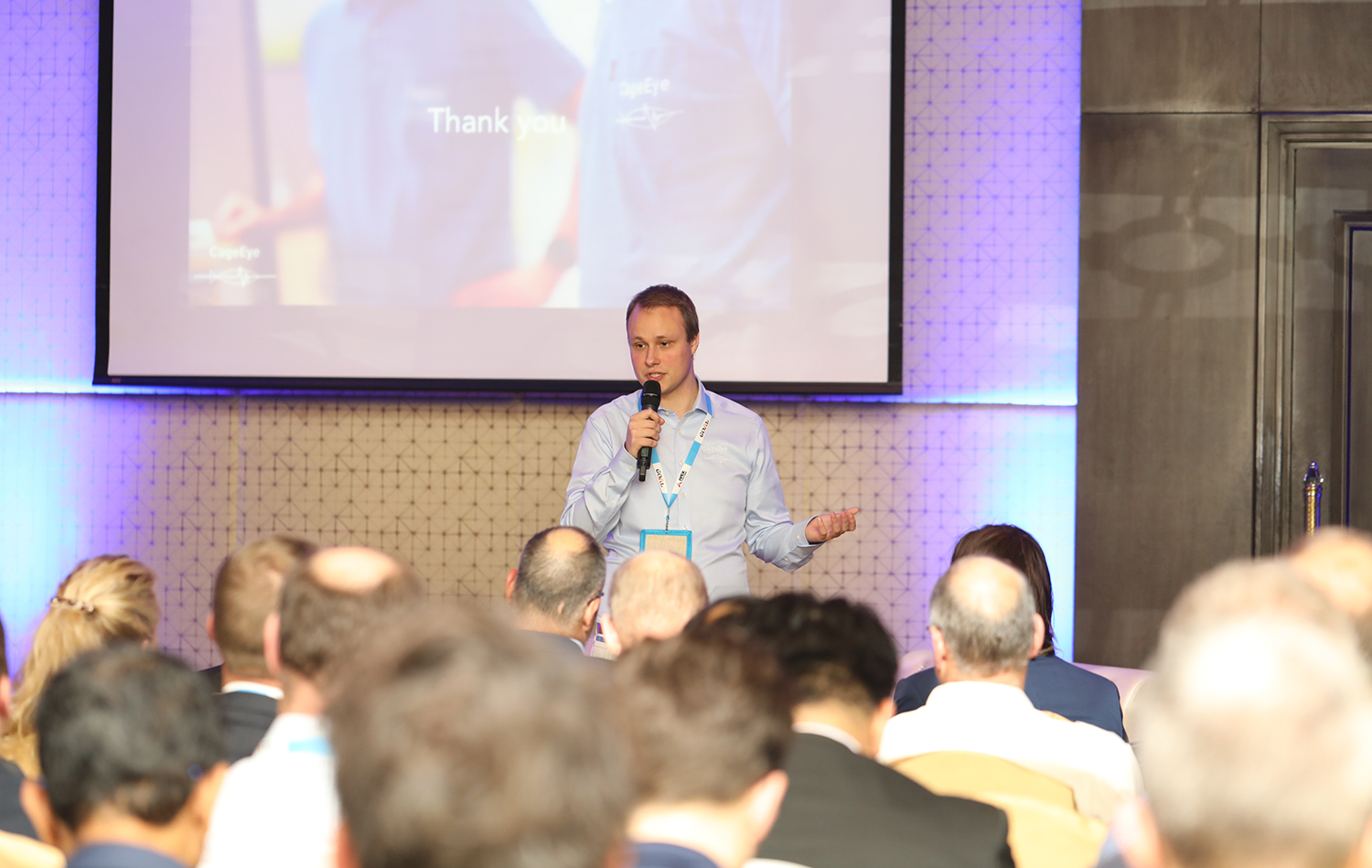
5. Technology and data will move aquaculture forward.
Salmon farmers have long known that feed is their primary cost, and that feed administration is a primary way to drive efficiencies into the business.
Growing the amount of available and accessible data will aid in this effort, said Bendik S. Søvegjarto, CEO of Oslo-based CageEye, who discussed how data and technology are being embraced by Norway’s world-leading salmon industry during a breakout session led by Netherlands-based venture capital firm Aqua-Spark (a contributing partner in this year’s GOAL program).
Søvegjarto estimated that 7 percent of salmon feed is wasted due to overfeeding, a problem that CageEye is tackling. Last year CageEye launched a product that offers an innovative solution: using machine learning and hydroacoustics to objectively measure the appetite of fish in sea cages.
Technology exists to make salmon farming even more advanced, but it’s the industry’s ability to collaborate that will drive its future growth, he said.
“The biggest challenge for technology adoption in salmon is sharing of data and integration,” he said. “We need feed data and the ability to actually control the feeding system.”
6. Social license for aquaculture is a basic necessity.
Ireland is home to the first-ever Best Aquaculture Practices area management certification, announced GAA’s Iain Shone during a session titled “Beyond Certification: How Area Management, Capacity Building and Smallholder Engagement Are Driving Sustainability in Aquaculture.”
Donal Maguire, director of seafood technical services at Bord Iascaigh Mhara (BIM), was on hand to talk about the importance of collaboration among producers in a given region. Maguire said BIM developed the “CLAMS” (coordinated local aquaculture management system) system to foster greater cooperation among shellfish producers in Clew Bay.
“Aquaculture is a difficult and risky business. Anything to mitigate that risk is worth doing,” he said. Area management is a good way for regional industries to build goodwill in the community, or social license. “We need to farm more fish. To farm more fish, we need more social acceptance. That’s where area management systems come into play.”
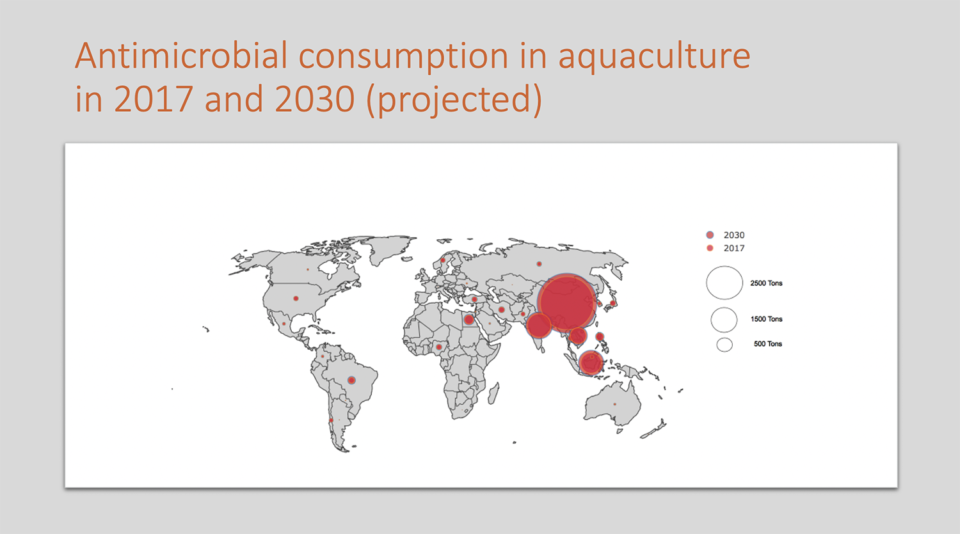
7. Antibiotics usage in farm animals should scare you.
The use of antibiotics in farmed animal production far outweighs those prescribed to humans. In fact, agriculture and aquaculture antibiotic usage doubles human consumption, according to keynote speaker Ramanan Laxminarayan, founder and director of the Center for Disease Dynamics, Economics & Policy (CDDEP) in Washington, D.C., and a senior research scholar at Princeton University.
Laxminarayan alerted GOAL attendees to get out in front of this issue, as consumers are demanding antibiotic-free food options. But antibiotics – which Laxminarayan said saved millions of lives during World War I, when more people were killed due to infections than battle wounds – still serve a key role for animal and fish farmers, if used for metaphylaxis (mass administration to prevent disease).
Prophylactic use to spur growth led to overuse, he argued, and the emergence of antibiotic-resistant bacteria and “superbugs” that can have severe health consequences for those infected. Laxminarayan said food producers must use antibiotics cautiously.
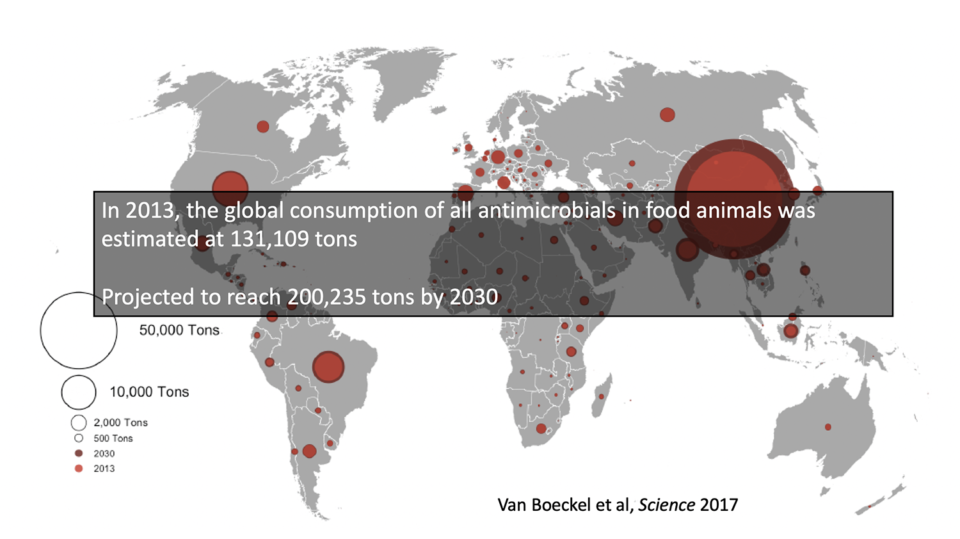
“Realize the world is catching up and paying attention to all uses of antibiotics. Recognize that your actions have global consequences for human, animal and aqua health. We’re all interrelated. We are like fish – we live in bacteria. It’d be like a fish saying I don’t want to touch water. You have more bacteria than human cells. They control our digestive system. Our relationship is invisible but very much there all the time,” he said.
Laxminarayan urged attendees to find ways of improving nutrition and growth using methods other than antibiotics; to improve health using good hygiene and vaccines where appropriate; and to phase out medicated feeds where appropriate.
“Watch this space,” he said. “It’s moving really fast!”
8. Investment can catalyze change and sustainability. And we need (a lot) more of it.
There used to be two types of investors that Amy Novogratz, co-founder and managing partner of Aqua-Spark, would meet: those who lost money in the aquaculture “casino” in the 1990s, and those who never heard of aquaculture.
“We now track about 1,500 companies. We do a lot of work to get companies from outside aquaculture to invest in it. But through investing in a deal, you get to know the industry relatively quickly,” said Novogratz during the panel discussion “Scaling Solutions for the Blue Revolution Through Investment.”
Mark Kahn, managing partner of Omnivore Partners, the only aquaculture-focused investment firm in India, said there is “history to overcome” for aquaculture investors, i.e. those who lost their shirts, but he’s bullish on some of the technology companies that serve the industry. Omnivore is an investor in both Eruvaka and AquaConnect, an online “omnichannel marketplace” for Indian shrimp producers.
Both Novogratz and Kahn agreed that investors are watching new technology and veterinary breakthroughs closely, while Tommy Sekiguchi, general manager of Japanese corporation Mitsui & Co. Ltd., was keen on RAS as the next big aquaculture investment opportunity, particularly in Japan. The other panelists weren’t quite as convinced.
“We really hope RAS works, or else it’s going to set aquaculture investment back in a big way,” Novogratz said, adding that there’s no danger of aquaculture becoming a crowded field for investors: “When you talk about the solutions we’ve been talking about today, you’re going to need multiple billions to bring those to fruition, so I think there’s still a lot of room in aquaculture.”
While she feels that “patient” capital is always what aquaculture needs, Kahn had a different take: “The industry does not need so much patience as steady nerves,” he said.
Novogratz is big on building cohesive communities of aquaculture businesses. Aqua-Spark has 17 companies in its growing portfolio, a carefully designed ecosystem intended to foster collaboration among the network. The company counts farms, alternative feeds, farm technologies and data platforms among its holdings, and it’s important to find the real game-changers, she said.
“Back the companies that are looking to do something new. Be there with them to help them get there. Really shine a light on what’s working,” she added.
9. Humane slaughter is a table-stakes issue. And an award-winning one, too.
Animal-rights activists scored a victory of sorts earlier this fall when undercover video footage of animal abuse was recorded at Cooke Aquaculture salmon farms in Maine and then posted online. The incident underscored the importance of humane practices in farming, right up to the point of slaughter.
GOAL attendees voted for Ace Aquatec’s Humane Stunner Universal as the winner of this year’s Global Aquaculture Innovation Award, outpacing wood-to-food company Arbiom and Pegasus Science’s mycotoxin-detecting technology.
Ace Aquatec’s HSU device – which applies is already being used by the Scottish Salmon Company and New Zealand King Salmon, among others, and is fully adaptable to multiple species and fish sizes.
“The stunning process can be a huge stress for fish. It doesn’t need to be,” said Mike Forbes, head of sales and marketing for Ace Aquatec. “It’s that firm belief that led us to develop our [HSU].”
Existing stunning methods – carbon dioxide, ice, percussion and dry electricity – all add unnecessary stress to fish, said Forbes. With the HSU, fish are pumped into a pipeline with electrodes and the fish come out unconscious. This process also makes salmon processing safer for workers.
The win shows how important animal welfare has become for consumers today, said Forbes. Consumer demand and retailer pressure, coupled with regulatory changes and producers seeking to differentiate, are all factors driving the adoption of new humane stunning and slaughter technologies.
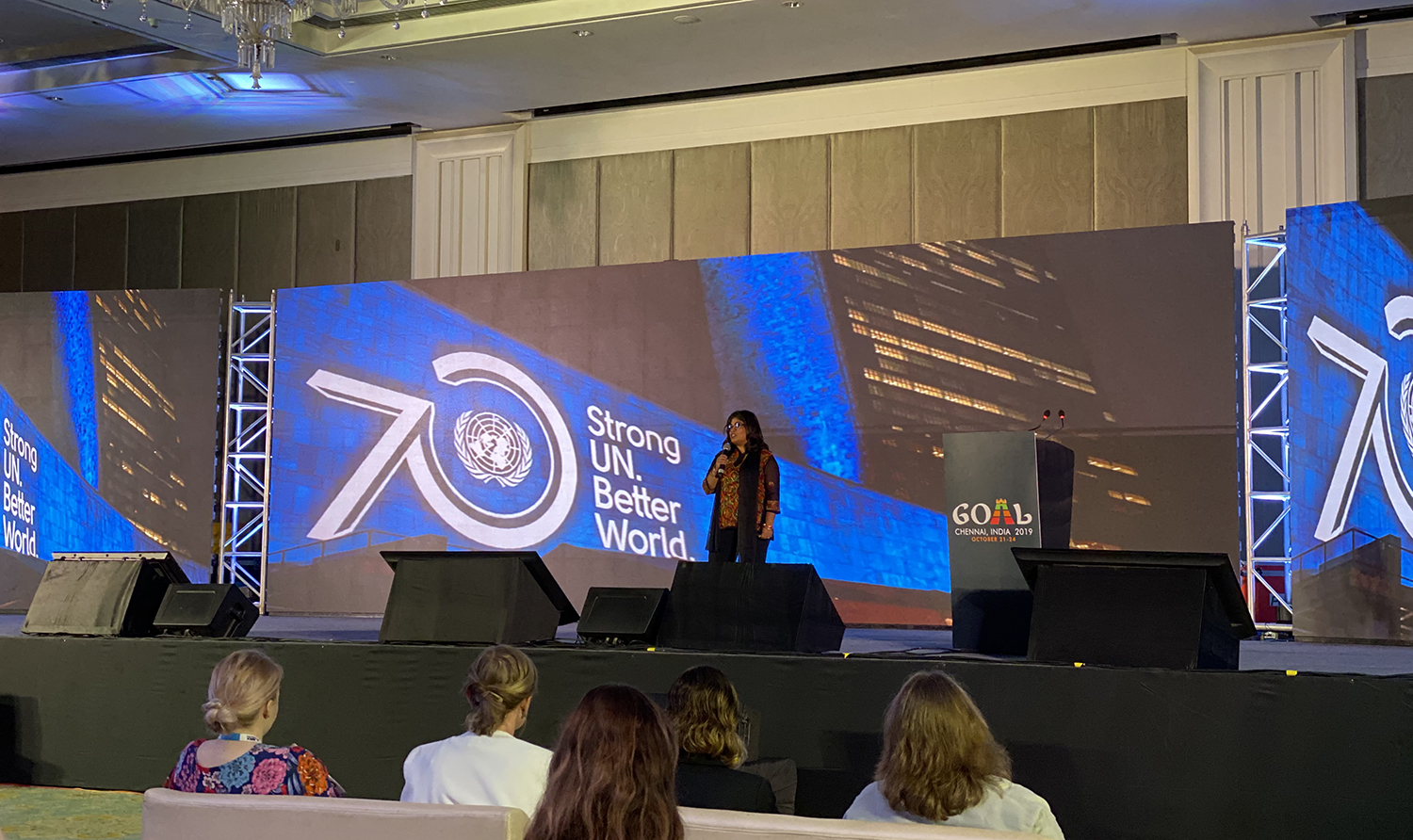
10. Social responsibility is everyone’s issue.
Modern-day slavery generates an estimated $150 billion in illicit profits annually, and 70 percent of the victims are women, said Rani Hong, a social accountability and human trafficking consultant and founder of Rani’s Voice.
Ms. Hong knows the world of kidnapping, slavery and child labor, because she is a survivor herself, taken from her home in Kerala, India, at the age of 7.
“That’s personal to me. I was one of those numbers,” said Hong during a series of presentations on corporate social responsibility, or CSR. “There is a cost, a high cost. Human rights and human dignity. I speak for those without a voice for the millions of children who cannot be here or are at high risk of exploitation.”
Darian McBain, global director of corporate affairs and sustainability at Thai Union Group since 2015, said it is a “business objective that you get human rights correct.”
Thai Union was embroiled in a major scandal several years ago when several media outlets discovered slave labor on Thai fishing vessels that sold product to the company and other major seafood firms. The European Union issued Thailand, a nation in the midst of a government transition, a yellow card for illegal, unregulated and unreported (IUU) fishing and Thai Union itself faced lawsuits, a Greenpeace campaign, angry customers and active NGOs.
McBain said it is time to “move beyond CSR.”
“This is a real business risk and a real business opportunity,” she added.
“This happens everywhere, it’s not just a Thai issue,” concluded CSR consultant Birgitte Krough-Poulsen, a member of the GAA Standards Oversight Committee. Krough-Poulsen said social change was possible through third-party certification, although a label like BAP is certainly no “sliver bullet.”
“But it’s an important tool in the kit for social change,” she said. “Certification can move the needle quite a long way to decent employment for workers around the world.”
Follow the Advocate on Twitter @GAA_Advocate
Now that you've reached the end of the article ...
… please consider supporting GSA’s mission to advance responsible seafood practices through education, advocacy and third-party assurances. The Advocate aims to document the evolution of responsible seafood practices and share the expansive knowledge of our vast network of contributors.
By becoming a Global Seafood Alliance member, you’re ensuring that all of the pre-competitive work we do through member benefits, resources and events can continue. Individual membership costs just $50 a year.
Not a GSA member? Join us.
Author
-
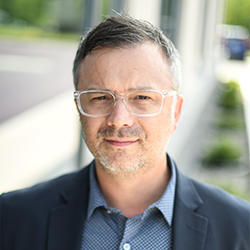
James Wright
Editorial Manager
Global Aquaculture Alliance
Portsmouth, NH, USA
Tagged With
Related Posts
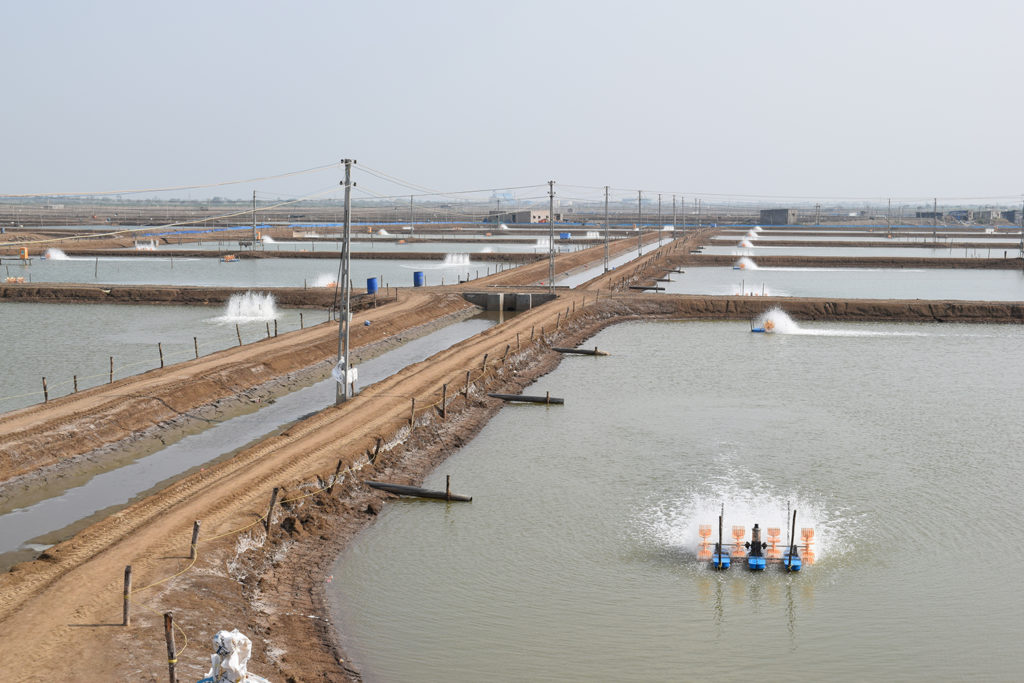
Intelligence
Can India sustain its farmed shrimp boom?
Long a global leader in farmed fish production, India has transitioned into an aquaculture powerhouse. Can its expanding shrimp sector keep the rapid pace?
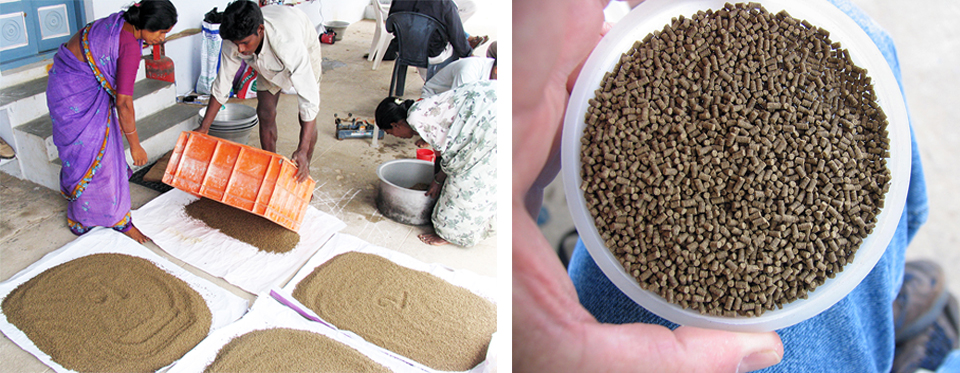
Aquafeeds
A look at India’s fish feed industry
India's fish-farming industry makes limited use of modern feeds, providing potential for the feed sector to grow. Commercial feeds are predominantly used for pangasius farming, followed by a rising popularity in carp culture.
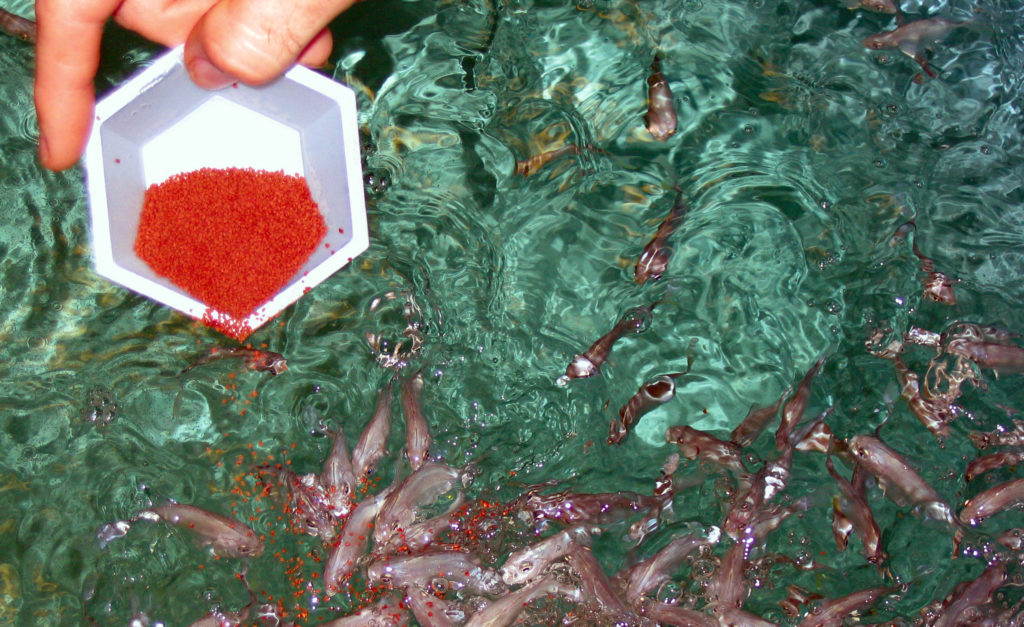
Health & Welfare
Antibiotics in aquaculture: Is responsible use possible?
Regulations on antibiotics in aquaculture vary by country and region, from outright bans to minimal oversight.
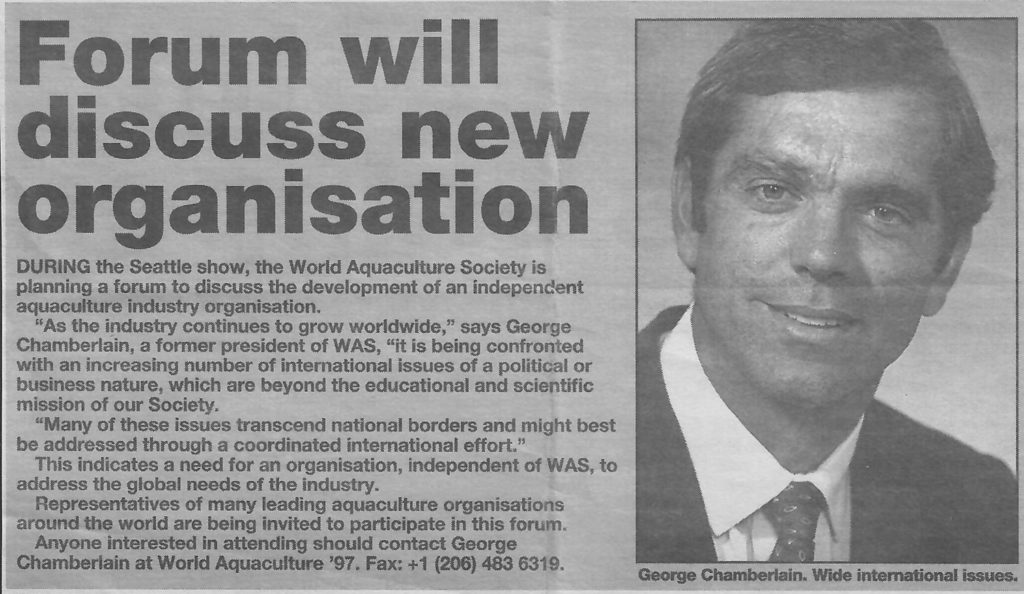
Innovation & Investment
20 years of the Global Aquaculture Alliance
A timeline of key milestones and achievements by the Global Aquaculture Alliance and its third-party aquaculture certification scheme, Best Aquaculture Practices (BAP).


